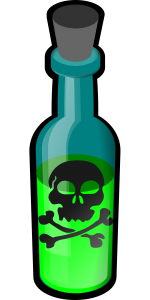 Cytotoxicity From Wikipedia, the free encyclopedia
Cytotoxicity From Wikipedia, the free encyclopedia
Cytotoxicity is the quality of being toxic to cells. Examples of toxic agents are an immune cell or some types of venom. Treating cells with the cytotoxic compound can result in a variety of cell fates. The cells may undergo necrosis, in which they lose membrane integrity and die rapidly as a result of cell lysis. The cells can stop actively growing and dividing (a decrease in cell viability), or the cells can activate a genetic program of controlled cell death (apoptosis).
Cytotoxicity assays are widely used by the pharmaceutical industry to screen for cytotoxicity in compound libraries. Researchers can either look for cytotoxic compounds, if they are interested in developing a therapeutic that targets rapidly dividing cancer cells, for instance; or they can screen “hits” from initial high-throughput drug screens for unwanted cytotoxic effects before investing in their development as a pharmaceutical. For a detailed information about the existing cytotoxicity assays click in the Wikipedia link.
The cytotoxicity dataset is composed of all activities of compounds assayed in cell growth and cytotoxicity assays in the ChEMBL database. The average score is calculated for each compound and added to the data frame containing the results of these compounds in the all ChEMBL database experiments. For ML purposes, all rows containing cytotoxicity or cell growth data are removed before the construction of the predictive models.

